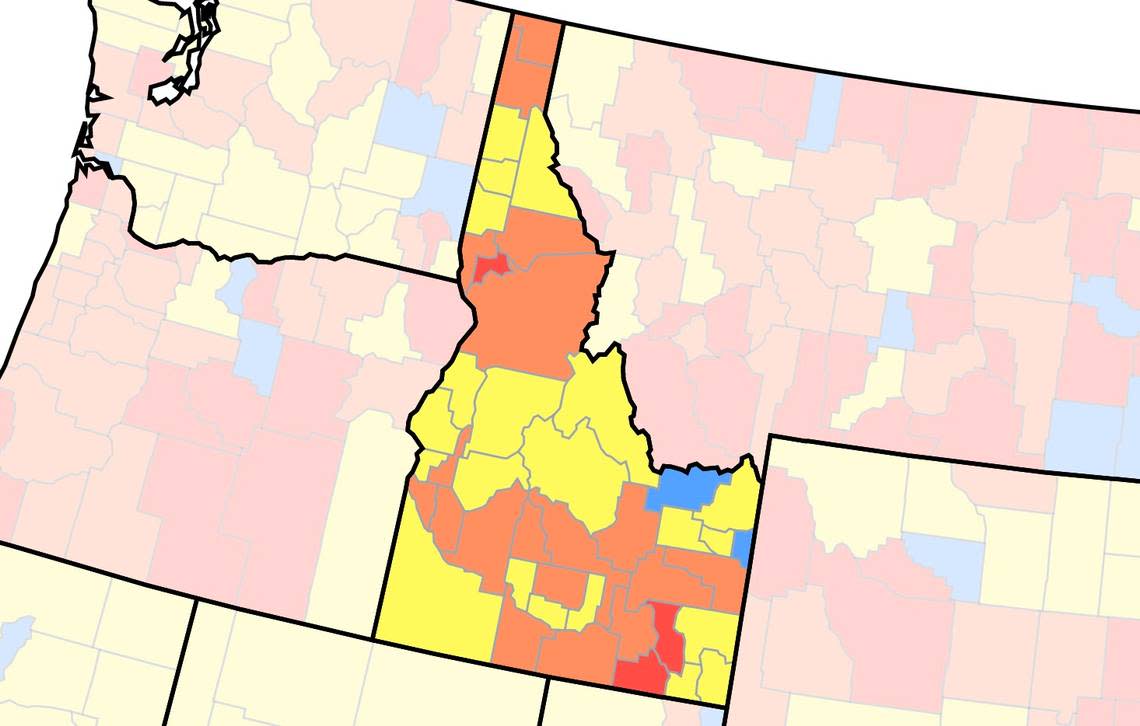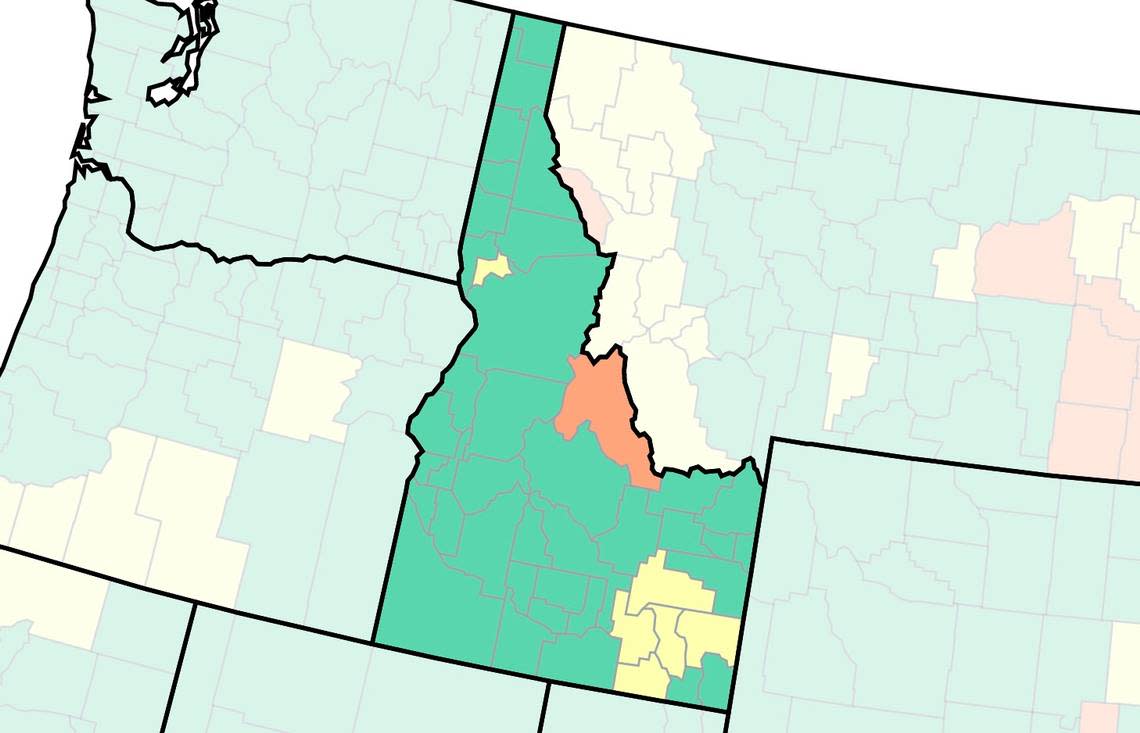COVID-19 levels are all over the place. Here’s what to know about your risk now
The risk of catching COVID-19 in the Boise area is fluctuating.
Last week, the U.S. Centers for Disease Control and Prevention moved Ada, Canyon, Boise and Elmore counties into the yellow zone, or medium-risk category, on its COVID-19 community level dashboard. New data from the CDC on Thursday showed those counties all dropped back down into the green zone, or low-risk category.
But that could change again next week.
The agency uses community levels, calculated based on the latest information, to determine risk and help people decide what prevention strategies might be warranted to avoid exposure to the disease. The criteria are based mostly on hospitalization statistics. (More on that below.)
In the medium-risk category, the CDC recommends immunocompromised people talk with their health care provider about whether to wear a mask and take other precautions. Only in the red zone, or high-risk category, is everyone advised to wear a mask indoors and on public transportation.
Now that Treasure Valley counties are back in the green zone, we can all relax, right?
Well, not so fast. In addition to community levels, the CDC also calculates community transmission. The two sound similar but are not the same.
Community transmission relies on two metrics to measure risk: total new cases per 100,000 people in the past seven days and the percentage of positive test results from the past seven days, also known as the positivity rate. The CDC first released this method of calculating risk in September 2020, before the availability of vaccines.

As of Thursday, only three Idaho counties — Lewis, Bannock and Oneida — were in the high-risk category, or red zone, for community transmission. But a slew of counties, including Ada, Canyon and Elmore, are shown in orange, indicating a “substantial” level of disease transmission — the second-highest category.
The CDC decided earlier this year it needed a different method of calculating community risk, one that relied more on hospital capacity. Here entered the COVID-19 community levels.
Community levels use three metrics to establish a threshold: new hospital admissions per 100,000 people in the past seven days, percentage of hospital beds filled by COVID-19 patients and new cases per 100,000 people from the past seven days.

Risk levels allow for high community transmission as long as hospitals are not strained, according to past reporting by the Idaho Statesman.
“The biggest factor to (the CDC’s risk levels) is, ‘Do we have enough hospital beds, and is our staffing available?’” Dr. David Pate, a member of Gov. Brad Little’s Coronavirus Working Group, previously told the Statesman by phone. “That’s not how you want to judge how the disease is doing.”
Here’s what the latest numbers say:
Hospital admissions. In Ada and Canyon counties, COVID-19 hospital admissions decreased from 10.2 per 100,000 people to 9.
Hospital beds filled. Staffed inpatient beds in use by confirmed COVID-19 patients in Ada and Canyon counties decreased from 4.9% the previous week to 4.3%.
Case rates. Ada County’s share of people with COVID-19 rose from 61 per 100,000 people the previous week to about 64, a 5% increase. Canyon County’s case rate rose from 43 to about 56, a 30% increase.
Meanwhile, the Idaho Department of Health and Welfare reported a small increase in positive test results from the last week. Statewide positivity rates increased from 7.8% for the week of Oct. 2-8 to 8.1% from Oct. 9-15.
Health officials say a rate of 5% or less is desirable. The rate is highly uncertain, though, given the use of at-home tests and the number of people not reporting their illness to authorities.
Public health experts are also warning of another COVID-19 surge as winter approaches. And cases are rising in Europe – usually an indicator of things to come in the West.
Coronavirus weekly need-to-know: Long COVID treatment, vaccines for children & more
Are Idaho students test scores back at pre-pandemic levels? Here’s what 2022 results show
Boise thinks COVID-19 is now ‘endemic.’ One Idaho doctor calls that ‘nonsense’
We’ve enjoyed working from home for a long time. But will we get away with it forever?
